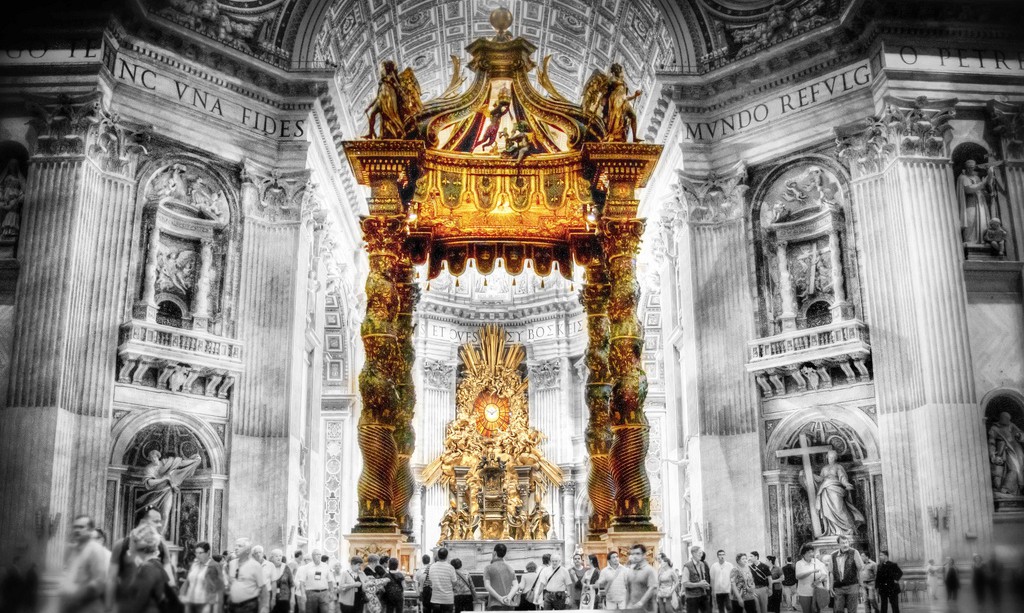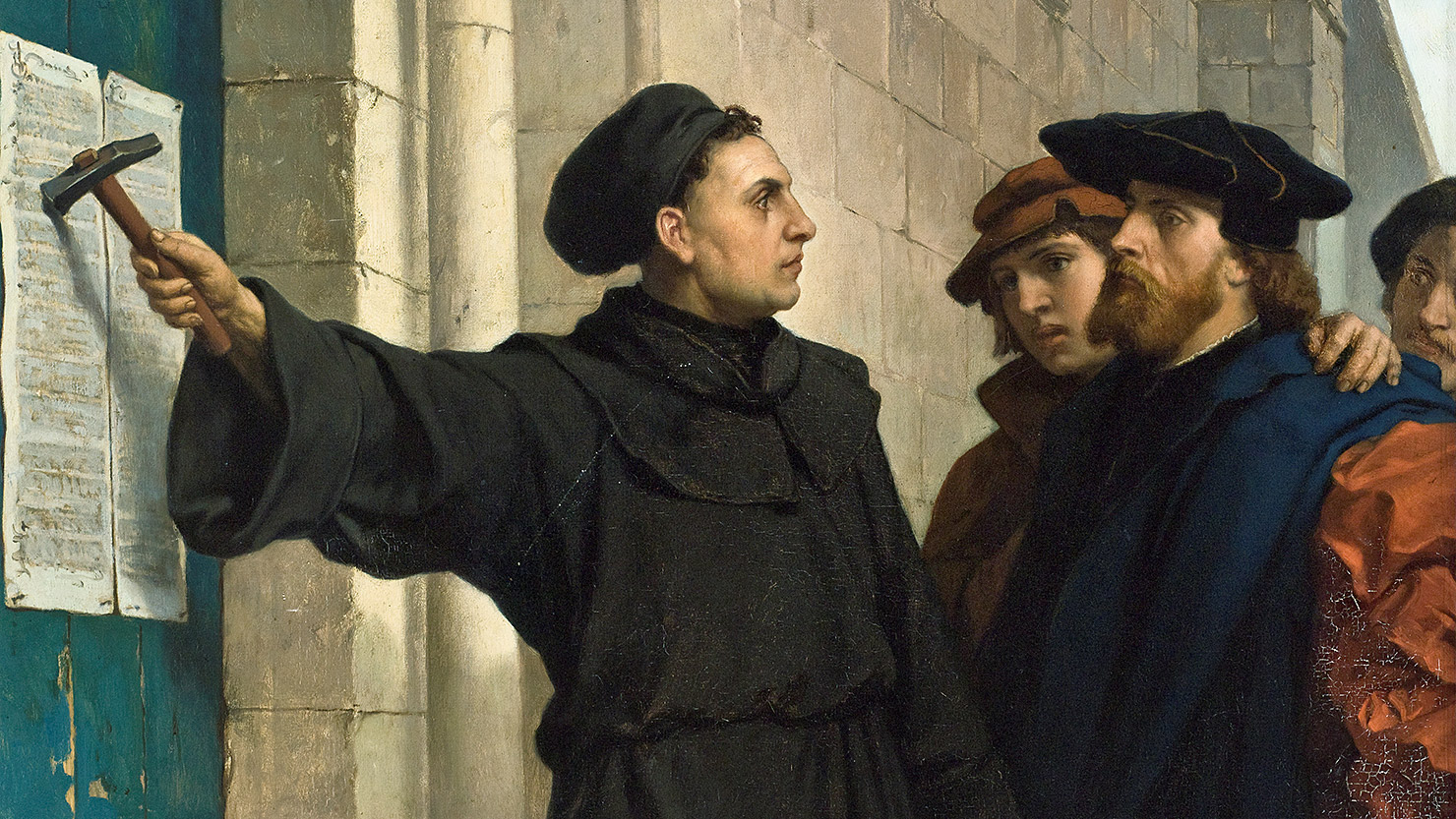
Here is a meditation for the Feast of the Nativity of the Blessed Virgin Mary, by Fr. Francis Xavier Weinger, 1876. Happy Birthday to Our Lady, the pure, holy, spotless and Immaculate Mother of God!
“What an one, think ye, shall this child be?”–Luke i, 66.
When St. John, the precursor of our Lord, first saw the light of day, and when his father’s tongue was loosed, as he wrote the name of the child, people wondered and said: “What an one, think ye, shall this child be? For the hand of the Lord was with him.”
This child was to be the forerunner of our Lord, of Him who is to be the Saviour of the world, to prepare for Him a way by which to enter the hearts of the children of men. Had the neighbors, when they first saw the child, but known his high vocation, they would have had every reason to congratulate him, and to be glad over his birth. I shall apply this text: “What an one, think ye, shall this child be?” to the birth of the Blessed Virgin, the Mother of the Incarnate Son of God.
How many and how great reasons should have urged the people, who lived at the time of her birth, to congratulate the child, and to be glad. To them, however, these were not known. But we do know, and we, therefore, celebrate the memory of the happy occurrence of her nativity, as though this were the day on which our Blessed Lady first saw the light of day. It is in this spirit, as you are well aware, that the Church celebrates her feasts, and her prayer for today’s festivity confirms what I have just said. Be it then to her honor and to our consolation that I ask the question: what child is this that is born today? and what shall this child be? The answer to the two questions shall be the subject of my sermon.
And thou, Mother of God, obtain for us the grace to know thy Dignity and Power, and our hearts will be filled with festive joy! I speak in the holy name of Jesus, to the greater glory of God! The chief reason why a whole empire often rejoices at the birth of a child, is because this child is heir or heiress to the throne. Then it is, that days of jubilee are proclaimed throughout the land. Observe, then, the character of the child that is born today. This child is the future Queen of heaven and earth, the Ruler of the powers of Nature, the Mistress, not only of the visible world, but of those spacious realms of glory that loom up with dazzling brilliancy beyond the skies. Yea, more, she is Queen of the Angels, in the order of their choirs,–of Angels, of Archangels, of Dominations, Virtues, Powers, Thrones, Principalities, Seraphim, and Cherubim. All the Choirs of Angels are hovering around the cradle of this child, and pay homage to their Queen.
Yet, even now, at the first moment of her life, this child is full of grace, surpassing, by the splendor of her virtues, all the Choirs of Angels who may justly exclaim in their bewilderment of joy: “Who is she, fair as the moon, bright as the sun, the one chosen Mother of the Son of God?”Already in her mother’s womb she was endowed with the full use of reason, so that with every breath she could gain merits that surpassed those of the angels and saints, and these merits would go on increasing to the end of her life. What a glorious spectacle for the Angels to behold this child! and her name should be Mary, which signifies–the sea.
It was not without a special intervention of heaven that St. Joachim and St. Anna gave the child of grace this name. For as all the waters of the rivers flow into the sea, and the sea majestically flows over them all, so should every grace which God ever granted to Angels and Saints, and will ever grant them to the end of time, flow into the heart of Mary, and be inundated with the fullness of her grace. Yet, what do I say: this Child is pleasing in the sight of Angels. Rather let us consider, with what complacency the Blessed Trinity looks upon this Child. “This is My beloved Son, in Whom I am well pleased,” thus resounded the voice of the heavenly Father on Mount Tabor. And today the voice of that same Father is heard over the cradle of the Blessed Virgin: “This is My beloved daughter, in whom I am well pleased.” And the voice of the Son re-echoes: “This is My Mother, whom I have chosen from eternity, and in whom I am well pleased.” Beneath her heart I shall soon rest as God and man; shall first take substance from her. Her I shall afterwards embrace as My Mother, honor as my Mother, and glorify as My Mother. “This is My beloved spouse whom I have chosen from eternity, and in whom I am well pleased, My only spouse, immaculate.” Such are the words spoken by the Holy Ghost. And had a prophet been present at her birth, as at that of St. John, what might his prophecies have been? We know, for even then all that Scripture and tradition said of her dignity power, sanctity, and glory was fulfilled.
This child–such might have been the words of the Prophet–this child when scarcely three years of age shall consecrate herself, body and soul, to God in the temple. This child, as the virgin spouse of St. Joseph, shall receive the Angel’s salutation, and become the Mother of the Son of God. Being Mother to the Son of God, she shall nourish and nurse Him, live with Him for thirty years under the same roof, shall daily have His most holy example before her eyes; and, like Him, grow in age and wisdom and grace before God and men. She shall accompany Him on His apostolic journeys, hear His divine word, and witness all the wonders that He will work. She shall hear the cry of the people: “Blessed the womb that bore Thee, and the paps that gave thee suck.” And when the hour comes in which He will end the sacrifice of redemption on the cross, this child shall stand at the foot of the Cross, and there she shall hear the words of her dying Son: Woman, behold thy Son!
She shall remain on earth in the midst of the Apostles as their Queen, and as protectress of the Church, until saints of every rank shall have preceded her to heaven, and be ready to render her entry glorious. This child, when it shall have shone as the Mirror of Justice on earth, shall be taken, body and soul, glorified into Heaven Oh, what a day of triumph this shall be, when Christ shall embrace her as His Mother, lead her to her throne, where she remains seated forever, and enjoys the bliss and glory of her Divine Son. There she will entone that “Magnificat” which once on earth she sang in such rapturous tones of thanksgiving. There she will be our intercessor with Christ, recommending to Him each of her children, and showing herself the Mother of grace and of mercy, the refuge of sinners, the consoler of the afflicted, the restorer of the sick, our only hope after Christ our Lord.
The whole of Christendom, from its first beginning, and down through all succeeding ages, honored our Lady under all these titles. How many are the examples and witnesses that go to establish grounds for which the Church greets her with these titles, and that prove how accurately were fulfilled the words of the Queen of Prophets: “From henceforth all generations shall call me blessed! ”
Let us think especially of the many shrines erected in her honor throughout Christendom, and of the enthusiasm with which Catholics fifteen hundred years ago received the decree of the Council of Ephesus, declaring that Mary is the Mother of God, and is to be honored and praised and venerated as such. Coming to our own days, think of the ever-memorable year 1854, in which Pius IX published the declaration that Mary was conceived without stain, exempt from the defilement of original sin. Then it was that the “Te Deum” resounded over the length and breadth of the earth. Look at the many shrines in Europe, where faith has fructified for nineteen hundred years. There is scarcely a province in which Catholics do not assemble at some shrine, and where we do not see countless memorials kept to testify that Mary has proven herself to be the refuge of sinners, the restorer of the sick, the help of Christians. But still more impressive and still more consoling it is for us, her children, to glance into the sanctuary of our own hearts, to look back upon our life-long pilgrimage, and to see how often we ourselves have experienced our dear Mother’s help and protection.
Let me ask the sinner: “Who has obtained for you the grace of conversion?” Oh, it is Mary! I cried to her for help. To her I owe this grace. And who, O grief-stricken soul! was it that consoled you when your father, mother, husband, or child were snatched away from you by death? You sought relief from Mary. She consoled you. And to whom do you acknowledge your thanks for the recovery from this or that sickness, for the rescue from this or that danger? You took refuge to Mary. She stood by you. Who is it that will be your consolation and hope on your deathbed? It is Mary, the Mother of a happy death.
And may she be such to us in truth. May she, by her assistance, complete, even unto the salvation of our souls, the work of grace begun in us, in order that we, who have presented our hearty congratulations at her cradle, may behold her throne of glory, and that when, through death, we shall be reborn unto life eternal, departing this world under her guidance and protection, we may forever share her happiness in heaven. Amen!

















